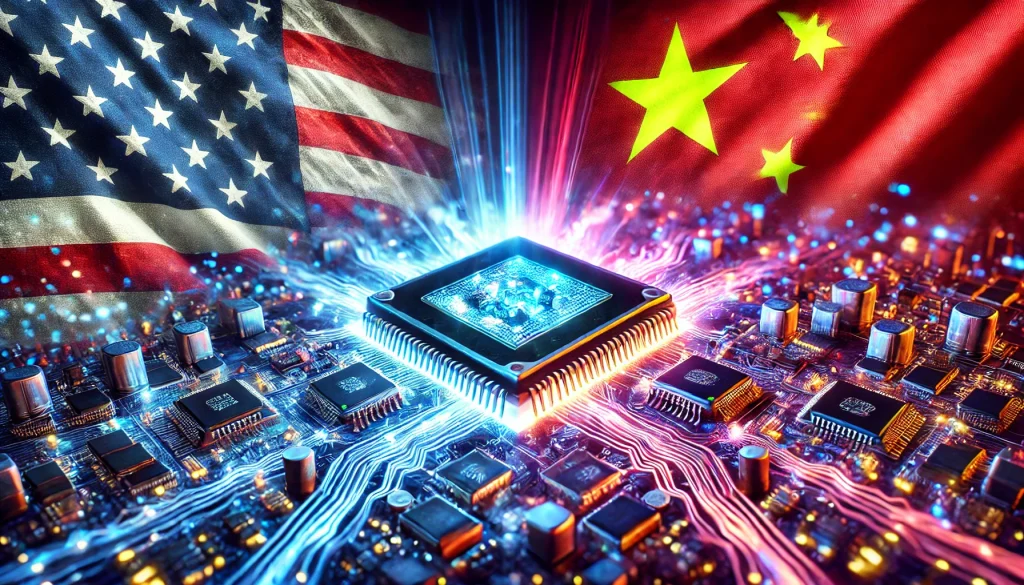U.S.-China GaN Patent Dispute: The Battle Between EPC and Innoscience
The patent dispute over gallium nitride (GaN) technology between the U.S. and China has entered a new phase. On November 7, 2024, the U.S. International Trade Commission (ITC) issued its final determination regarding the patent infringement lawsuit between EPC (Efficient Power Conversion Corporation) and Innoscience Technology(Investigation No. 337-TA-1366). Statements released by both companies reflect differing perspectives on the impact of the decision.

Overview of the ITC Ruling
The ITC determined that Innoscience’s products infringed claims 2 and 3 of EPC’s U.S. Patent No. 8,350,294 (‘294 patent). Consequently, the ITC issued a limited exclusion order restricting the importation of specific Innoscience chips into the United States. However, claim 1 of the ‘294 patent was invalidated on grounds of obviousness, and no infringement was found regarding EPC’s U.S. Patent No. 8,404,508 (‘508 patent).
Additionally, the ITC imposed a 5% bond on the importation of the infringing products but stated that the ruling would not affect the importation of finished products by Innoscience’s customers. This divergence in interpretation is reflected in the statements made by the two companies.
Perspectives of Both Companies
EPC’s Position
EPC hailed the ITC ruling as a “major victory.” According to the company’s statement, the decision reaffirmed EPC’s leadership in GaN technology and validated its intellectual property. EPC’s CEO, Alex Lidow, emphasized the company’s commitment to protecting its intellectual property while continuing to innovate and promote the widespread adoption of its technology through patent licensing.
EPC has invested heavily in building a robust patent portfolio for GaN technology over the past two decades. The company views this decision as a testament to its intellectual property strategy and a reinforcement of its position as a leader in GaN innovation.
Innoscience’s Position
In contrast, Innoscience emphasized that the ruling has no impact on its customers. The company stated that the exclusion order is limited to its chips, allowing its customers to import finished products without any issues.
Innoscience also challenged the validity of the ‘294 patent, citing ongoing inter partes review (IPR) proceedings at the U.S. Patent and Trademark Office (USPTO), with a decision expected in March 2025. The company expressed confidence in its invalidity arguments.
Moreover, Innoscience highlighted that it has already implemented design changes based on the ITC’s interpretation of the term “compensated GaN layer” and is preparing to release redesigned products that avoid the patent. The company reaffirmed its commitment to pursuing appeals and IPR proceedings to achieve its ultimate goal of a favorable resolution.
Outlook
The ITC ruling marks a significant milestone for both EPC and Innoscience, but the final resolution of the dispute is likely to take more time. Key developments to watch include the outcome of the USPTO’s review of the ‘294 patent’s validity and the appeals indicated by both parties.
EPC aims to expand the reach of its intellectual property through patent licensing, while Innoscience is focused on maintaining market competitiveness by introducing redesigned products. GaN technology, known for its energy efficiency and compactness, continues to be a game-changing innovation with the potential to impact the industry as a whole.
This case highlights the critical role of intellectual property strategies in the semiconductor industry, demonstrating the importance of patent validity, infringement rulings, and design-around solutions. The ongoing battle between EPC and Innoscience symbolizes the intensifying competition over GaN technology, with outcomes that could significantly influence future technological advancements and market dynamics.

